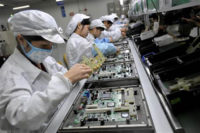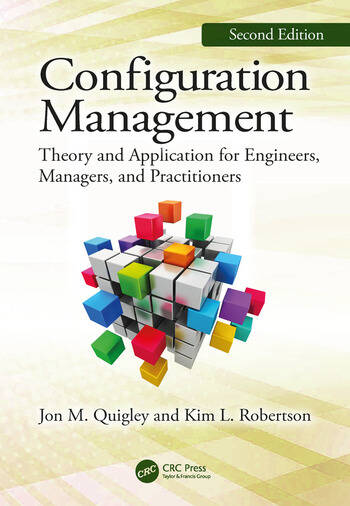
The head of a large contract electronics manufacturing company said to me, in all seriousness, “Education is our core competency.” He was wrong.
The company does spend a ton of time and money putting employees in training rooms. But it doesn’t provide what might be called education. It provides training. And this failure to educate kills the company’s earnings and plays a big role in the cost-justification for sending jobs to Asia.
Although many people use training and education interchangeably, the words don’t mean the same thing. Think of training as conditioning or indoctrination-telling people what to do but not why. The emphasis is on memorizing and obeying rules. Education, on the other hand, emphasizes the why as much as the what, and this leads to insight, understanding and reasoning.
Compared with education, training produces little value. Training is a depreciating asset. Recollection of training instructions begins to fade the minute the class ends. The need for regular “refresher” training reflects the reality that the results of training are temporary.
Education, on the other hand, causes students to continue thinking about the subject long after the formal class ends. Education is partly the process of learning how to learn; an educated person’s knowledge and insight becomes progressively greater over time. But true education is about more than facts. Done properly, education produces the ability to use the lessons constructively and adapt to changing conditions.
Training reflects the social realities of a century ago. Education requires prior education. High school, for example, requires primary schooling first. But few manufacturing workers in the past got much primary education, let alone secondary schooling. With workers lacking the knowledge base for education, training wasn’t just the best option-it was the only option. Fortunately, manufacturing needed large numbers of minimally skilled workers to perform menial, repetitive tasks, and training met the job requirements.
But times and society have changed. Mindless jobs have largely migrated to Asia. Employees today have much more formal education than their counterparts of 50 years ago. Even without additional formal education, today’s workers have been exposed through television to more of the world than their parents knew existed. All of us became global tourists without leaving home. In other words, manufacturing employees today have the intellectual tools to handle education and are employed in jobs that demand education.
Not surprisingly, the traditional training model isn’t working anymore.

Just as the technology for audio players has evolved from vacuum tubes to microchips, workforce development in the electronics industry must evolve from training to education. Photo courtesy Electronics Manufacturing Sciences Inc.
A New Paradigm
In many ways, the industrial training model was fine in the early days of electronics assembly. Although the products seemed sophisticated at the time, the components were fairly hardy, and assembly requirements were, by today’s standards, mindless, repetitive and rather crude. Those characteristics allowed the industry to rely on quality control (finding and fixing defects) rather than quality assurance (preventing defects). Operator skill requirements could be met by memorization of visual workmanship requirements and performing simple soldering with highly solderable components.Memorizing workmanship requirements was not difficult. Components came in a handful of configurations, and large soldered connections were easy to see and evaluate. Trainees were told to produce cosmetically perfect solder connections on highly solderable components without regard for how the connections were achieved. Reworked connections were scored as highly as those made perfectly the first time.
Inevitably, trainees concluded that they could improve reliability by changing the appearance of imperfect solder connections to look like perfect connections. Sadly, anyone using a soldering iron can change the appearance of solder, so an unreliable connection looks cosmetically perfect-but is still unreliable. Moreover, the extra heat inflicted during rework breaks down bonds inside the components and reduces the lifetime of that component. The result is a nicer-looking solder connection bonding a component that has much higher probability of failure.
This carried over to production practices in the form of massive inspection and reinspection, touchup, rework and repair. It is not surprising that the term “hidden factory” originated in electronics assembly.
Today’s components are vastly more complex than their predecessors. They are smaller, which makes visual assessment of their solder connections immensely more difficult. Their leads often have finishes on which solder flow can be challenging. New solder alloys with different visual characteristics have been introduced.
The permutations and combinations of components have become so great that the most common document for reliability criteria, IPC-A-610, runs to more than 400 pages filled with often puzzling images that tend not to resemble the actual solder connections coming out of production. And, perhaps most important, the major damage caused by the heat of rework happens inside components where it can’t be seen. Not surprisingly, workers are baffled-and even more inclined to rework reliable connections. The hidden factory is alive and flourishing.
Electronics Manufacturing Sciences helps electronics assembly companies improve efficiency and product reliability. Since soldering is the core activity of electronics assembly, this means achieving substantial improvements in their soldering operations. This has required us to replace their current training programs with science-based education. Having spent 30 sometimes frustrating years discovering what works and what doesn’t, we believe the following principles should be at the heart of any manufacturing education program, whether the subject is electronics, plastics or pharmaceuticals.
Provide the template for processing success. We put process requirements in the form of a step-by-step recipe. Follow this recipe, we teach, and you will get perfect results. Every defect results from failure to follow the recipe. The same defects will occur over and over until the process is changed to conform to the recipe. Finding out why a defect occurred is as simple as comparing what was done to what should have been done. The idea that soldering is not very different from baking a cake eliminates fear for the typical electronics assembler, while intriguing even the most knowledgeable engineers and managers.
Don’t be afraid of teaching lessons that traditional industry thinking regards as beyond the grasp of assemblers. We put chemistry in terms of fire, baking a cake, baking soda and vinegar and other events everyone has experienced. Then we are able to explain oxides, fluxes, solderability and intermetallic bonding, the heart of soldering.
Don’t assume existing employee knowledge. Although we once believed that all engineers understood solderability, we have found that most design engineers don’t realize they have been specifying component plating or configurations that cause major production difficulties. Similarly, we found that production personnel lacked the technical knowledge to explain the reasons those component platings or configurations were making their lives miserable.
Language precision counts. Poorly chosen terms create barriers to problem-solving. For example, a common term for an electronics assembly defect is “cold solder.” The problem is that “cold” solder typically has nothing to do with heat, except for one form caused by too much heat. Calling a defect “cold solder,” therefore, suggests a corrective action that will not cure the problem and typically makes it worse.
Use problems and problem solving. In our case, we developed a fiendishly complex soldering problem that encompasses the most common and costly process errors faced every day in every electronics assembly plant. This exercise is presented early in the course, and the lessons are taught in the context of solving the problems.
This approach is diametrically opposed to the traditional electronics assembly training approach of providing materials that work perfectly together. Human beings learn from mistakes and finding solutions. So set students up for initial failure to make them more effective in the future. (They will feel so much better when they turn initial failure into success.)
Pose tough questions that require reasoning based on the principles being taught. Remember that the objective of education is reflection and application of knowledge to changing circumstances. We always tell clients, “Don’t take a supplier’s word for anything.” If you don’t understand a concept, you are betting your company on a mystery.
The success rate with this approach has been gratifying. The amount of needless “work” declines sharply, and the product reliability (measured by test failures and field returns) soars. The cost of the education (educator fees and employee time in the classroom) is typically recovered in a matter of weeks, primarily because of efficiencies and reliability enhancements devised by the students as a result of the new knowledge. Unlike the training that the education replaced, no “re-educating” is required, another cost-saving.
Our experience with these principles has convinced us that (with appropriate content modifications), they will work profitably in any manufacturing industry. The content of our “EMS Science of Soldering” program is specific to electronics assembly, but we hope other industries will create education programs for their unique needs.
When education replaces training, the economics of sending jobs to low-wage countries are completely rewritten. Unfortunately, it is too late to save the American jobs of training-focused contract manufacturers.
ASSEMBLY ONLINE
For more information on training and electronics assembly, visit www.assemblymag.com to read these articles:•Assembly Planbook: Use Your Best Assets to Reduce Turnover.
•Leading Lean: Lean and Human Resources.
•Electronics Assembly: Assembling Big Boards.




